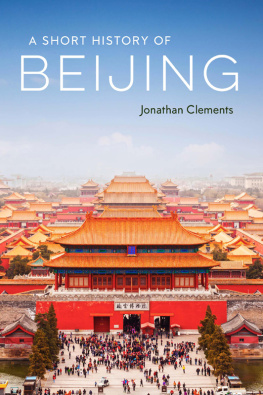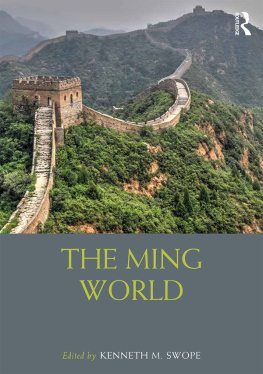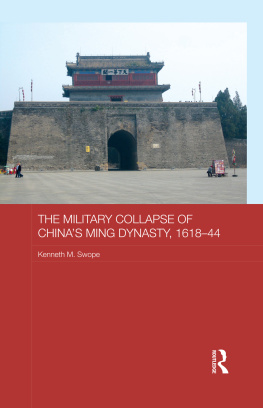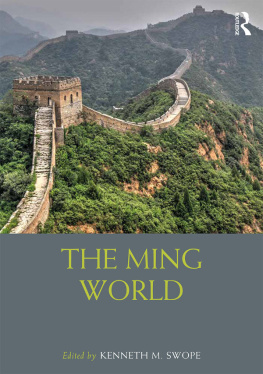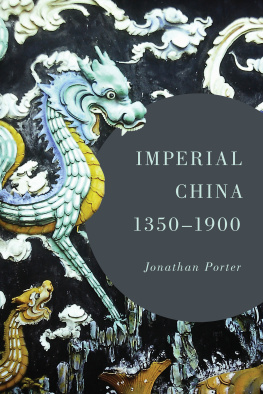Chinas Second Capital
Nanjing under the Ming, 13681644
This book is a study of the dual capital system of Ming dynasty China (13681644), with a focus on the administrative functions of the auxiliary southern capital, Nanjing. It argues that the immense geographical expanse of the Chinese empire and the poor communication infrastructure of premodern times necessitated the establishment of an additional capital administration for effective control of the Ming realm. The existence of the southern capital, which has been dismissed by scholars as redundant and insignificant, was, the author argues, justified by its ability to assist the primary northern capital better control the southern part of the imperial land. The practice of maintaining auxiliary capitals, where the bureaucratic structures of the primary capital were replicated in varying degrees, was a unique and valuable approach to effecting bureaucratic control over vast territory in pre-modern conditions. Nanjing translates into English as southern capital and Beijing as northern capital.
Jun Fang is Professor of History at Huron University College, Western University, Canada.
Asian States and Empires
Edited by Peter Lorge, Vanderbilt University
The importance of Asia will continue to grow in the twenty-first century, but remarkably little is available in English on the history of the polities that constitute this critical area. Most current work on Asia is hindered by the extremely limited state of knowledge of the Asian past in general, and the history of Asian states and empires in particular. Asian States and Empires is a book series that will provide detailed accounts of the history of states and empires across Asia from earliest times until the present. It aims to explain and describe the formation, maintenance and collapse of Asian states and empires, and the means by which this was accomplished, making available the history of more than half the worlds population at a level of detail comparable to the history of Western polities. In so doing, it will demonstrate that Asian peoples and civilizations had their own histories apart from the West, and provide the basis for understanding contemporary Asia in terms of its actual histories, rather than broad generalizations informed by Western categories of knowledge.
1. The Third Chinese Revolutionary Civil War, 194549
An Analysis of Communist Strategy and Leadership
Christopher R. Lew
2. Chinas Southern Tang Dynasty, 93776
Johannes L. Kurz
3. War, Culture and Society in Early Modern South Asia, 17401849
Kaushik Roy
4. The Military Collapse of Chinas Ming Dynasty, 161844
Kenneth M. Swope
5. Chinas Second Capital
Nanjing under the Ming, 13681644
Jun Fang
Chinas Second Capital
Nanjing under the Ming, 13681644
Jun Fang
First published 2014
by Routledge
2 Park Square, Milton Park, Abingdon, Oxon OX14 4RN
and by Routledge
711 Third Avenue, New York, NY 10017
Routledge is an imprint of the Taylor & Francis Group, an informa business
2014 Jun Fang
The right of Jun Fang to be identified as author of this work has been asserted by him in accordance with the Copyright, Designs and Patent Act 1988.
All rights reserved. No part of this book may be reprinted or reproduced or utilised in any form or by any electronic, mechanical, or other means, now known or hereafter invented, including photocopying and recording, or in any information storage or retrieval system, without permission in writing from the publishers.
Trademark notice: Product or corporate names may be trademarks or registered trademarks, and are used only for identification and explanation without intent to infringe.
British Library Cataloguing in Publication Data
A catalogue record for this book is available from the British Library
Library of Congress Cataloging in Publication Data
Fang, Jun, 1962
Chinas second capital: Nanjing under the Ming, 13681644 / Jun Fang.
pages cm. (Asian states and empires; 5)
Summary: This book is a study of the dual capital system of Ming dynasty China (1368-1644), with a focus on the administrative functions of the auxiliary Southern Capital, Nanjing. It argues that the immense geographical expanse of the Chinese empire and the poor communication infrastructure of pre-modern times necessitated the establishment of an additional capital administration for effective control of the Ming realm. The existence of the Southern Capital, which has been dismissed by scholars as redundant and insignificant, was, the author argues, justified by its ability to assist the primary Northern Capital better control the southern part of the imperial land. The practice of maintaining auxiliary capitals, where the bureaucratic structures of the primary capital were replicated in varying degrees, was a unique and valuable approach to effecting bureaucratic control over vast territory in pre-modern conditions. Nanjing translates into English as Southern Capital and Beijing as Northern Capital Provided by publisher.
Includes bibliographical references and index.
1. Nanjing (Jiangsu Sheng, China) 2. ChinaPolitics and government1368-1644. I. Title.
DS797.56.N365F358 2014
951.136dc23
2013047540
ISBN: 978-0-415-85525-9 (hbk)
ISBN: 978-0-203-73794-1 (ebk)
Typeset in Times New Roman
by Taylor & Francis Books
For Lifang and Tina
Table of Contents
I would like to thank many people who have helped to make the publication of this book possible. I must thank Peter Lorge for inviting me to contribute a volume on Ming Nanjing to the Asian States and Empires series. My thanks are also due to Timothy Brook, Chen Dezhi, Raymond Chu, Edward Farmer, Richard Guisso, Hsiao Chi-ching, Yuan-chu Lam, Bernard Luk, Frederick Mote, Qiu Shusen, Michael Szonyi, Frederick Wakeman, and Yamane Yukio. They generously supported me in many ways: provided inspiration and guidance, supplied bibliographical questions, read the whole or parts of the book in its earlier forms and offered valuable suggestions for improvement. I am also delighted to have the opportunity to thank my friends and colleagues for their encouragement and assistance over the years: Amy Bell, Charles Chan, Fan Jinmin, Lai Ming-chiu, Geoff Read, Wang Shuanghuai, Wang Zhenping, Simon Wong, and Zhu Bangwei. I wish to single out James Flath, who has been always generous with his time and expertise in proofreading my manuscripts. This time is no exception. I am, of course, solely responsible for the deficiencies and errors that remain.
The helpful staff at the libraries of the following institutions were contributory to the completion of this book as well: the Academic Sinica (Fu Ssu-nien), the Chinese University of Hong Kong, Harvard-Yenching, Huron University College, Nanjing University, Toyo Bunko, and the University of Toronto (Cheng Yu-tung). I am grateful to Ming Studies and Monumenta Serica for publishing early versions of respectively. I am also fortunate to have been able to work with Peter Sowden, Paola Celli and Helena Hurd at Routledge who provided warm encouragement at every step from manuscript to book.
To the end I reserve a special debt of thanks to my wife and daughter for their love and care. This book is dedicated to them.


